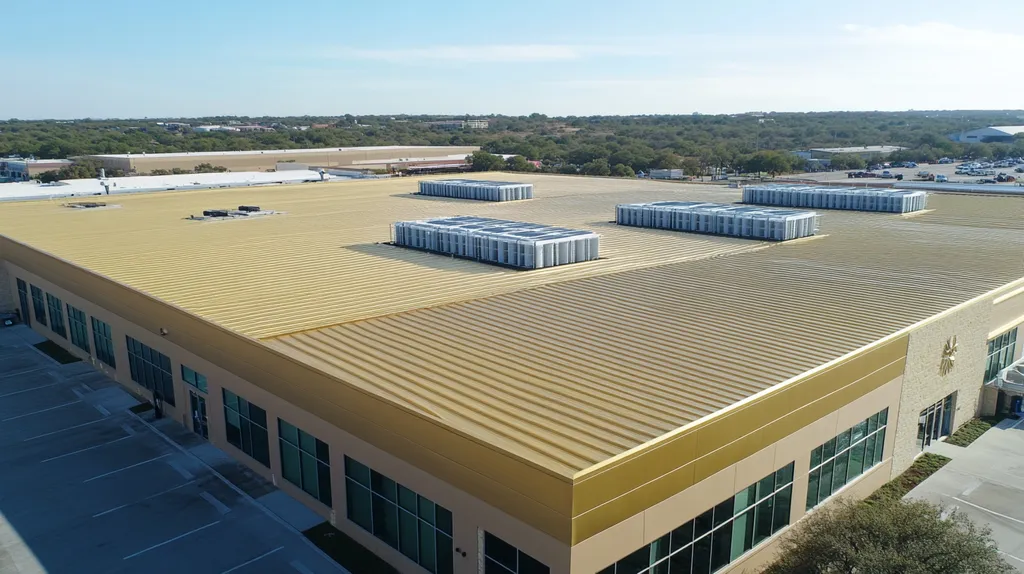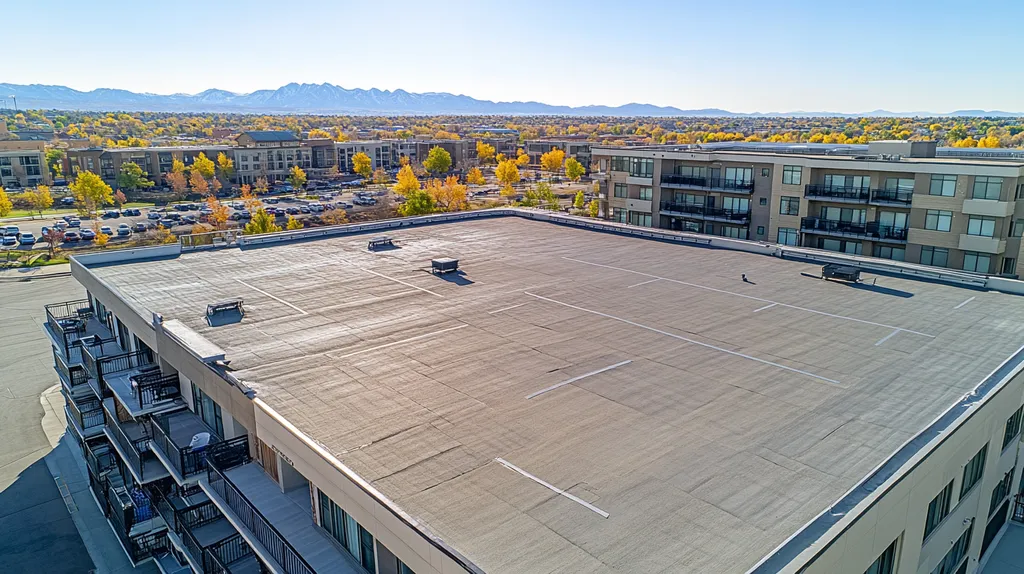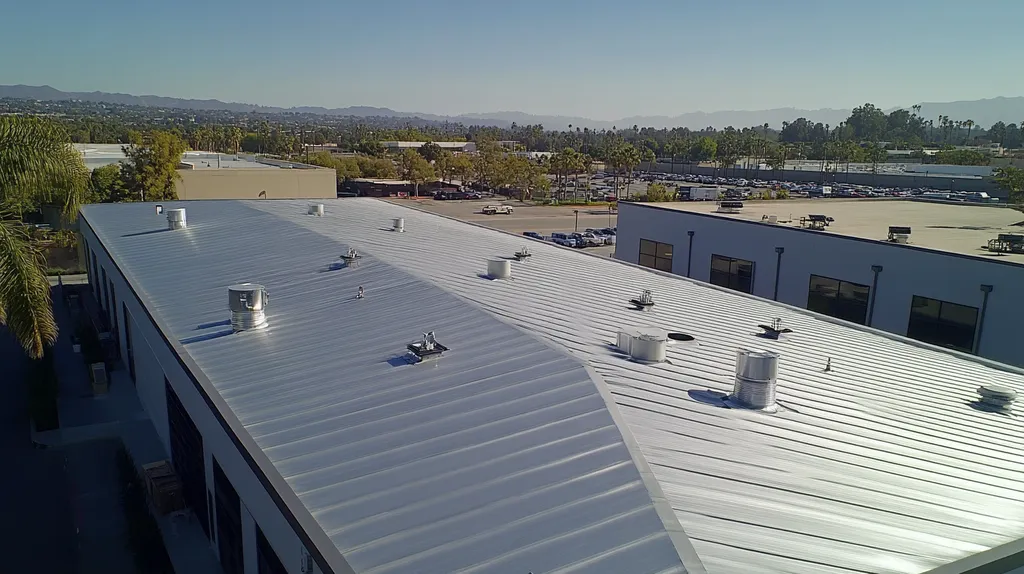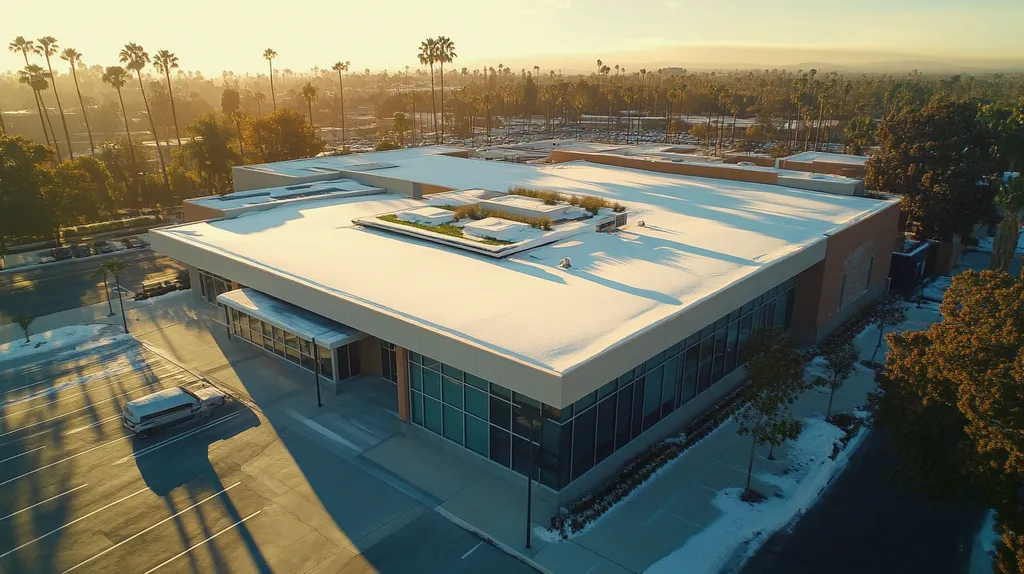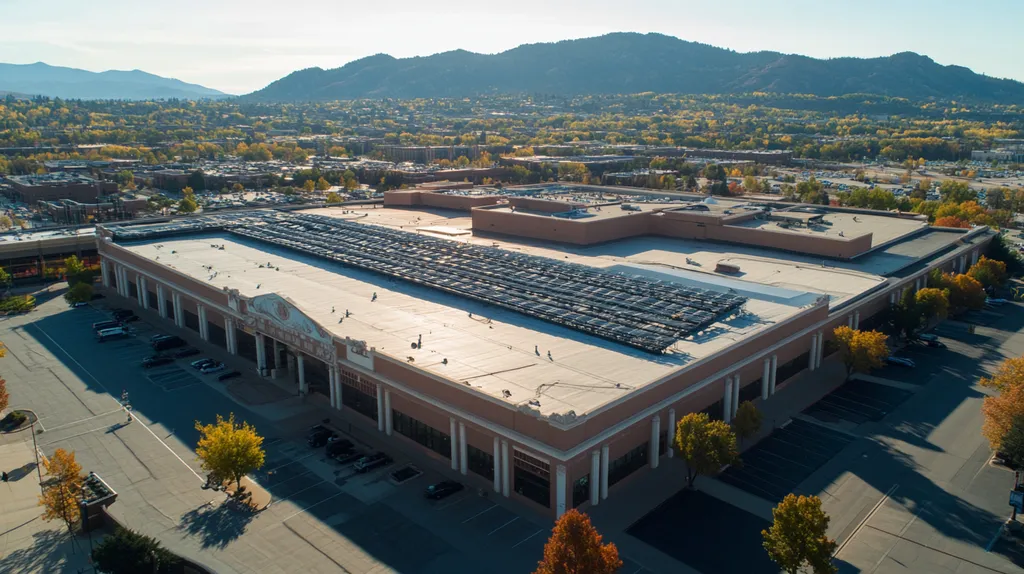Commercial roof leaks cost U.S. businesses over $3.7 billion annually in repairs and lost productivity. Studies show that 85% of all commercial roof failures stem from delayed or improper leak response.
For facility managers, establishing clear protocols for leak detection, containment, and repair is essential for protecting both property assets and operational continuity.
This comprehensive guide examines critical factors in leak response, from initial safety measures through long-term maintenance planning, providing actionable solutions to minimize damage and control costs.
SECTION 1: PERFORMANCE FACTORS
Leaks in commercial roofs can escalate into serious issues, leading to extensive damage and significant repair costs. Alarmingly, studies reveal that 70% of roofing leaks happen within the first few years post-installation. This underscores the critical importance of effective leak management. By understanding leak detection methods and assessing roof integrity, property owners can protect their investments and save thousands. This section delves into three essential performance factors: strategies for leak detection, the effects of roof drainage, and the evaluation of material integrity.
Leak Detection and Source Identification Methods
Pinpointing the source of a roof leak is vital to preventing long-term damage. Effective methods include visual inspections, thermal imaging, and moisture detection tools. One powerful tool, infrared cameras, can identify areas of trapped moisture below roof membranes, allowing for timely interventions.
Visual inspections can reveal warning signs like water stains and mold growth. A strategic approach focusing on seams, penetrations, and flashings—areas typically prone to leaks—can streamline inspections and boost efficiency.
Employing moisture mapping technology further aids in tracking moisture intrusion over time. By utilizing a combination of these methods, facility managers can gain a thorough understanding of both visible and hidden leaks.
Key Action Items
Roof Drainage and Water Accumulation Impact
A well-designed roof drainage system is crucial for preventing leaks. Water accumulation can stress roofing materials and exacerbate vulnerabilities. For example, standing water significantly accelerates membrane degradation, shortening the roof’s lifespan.
Robust drainage systems should feature appropriately sized and strategically positioned gutters and downspouts to redirect water efficiently. Regular maintenance is critical to keep drainage pathways clear and to prevent backups, which can jeopardize roof integrity.
Inadequate drainage poses risks not only to the structure but also encourages mold and pest infestation, creating additional burdens for facility managers. Proactive drainage management is essential for safeguarding both the building’s roof and its occupants.
Key Action Items
Material Integrity and Flashing Condition Assessment
The condition of roofing materials and flashing is fundamental to preventing leaks. Deteriorating or weak flashing around penetrations such as vents and chimneys can become failure points, allowing water to infiltrate the building. Regular assessments of these elements are crucial.
Visual inspections should focus on identifying cracks, corrosion, and signs of wear in flashing materials. Recognizing these red flags early can prompt immediate repairs, preventing more severe, costly problems down the line.
It’s also important to select roofing materials compatible with local climate conditions to enhance long-term sustainability. Facility managers should ensure that all materials used are suited to withstand specific weather challenges, promoting greater durability.
Key Action Items
SECTION 2: FINANCIAL CONSIDERATIONS
Addressing leaks in commercial roofs is not merely a maintenance issue; it’s vital for financial health. Reports indicate that unchecked roof leaks can inflate repair costs to over 50% of a building’s value. Facility managers must grasp the financial ramifications of leak issues, budget effectively for urgent and long-term repairs, and utilize warranty and insurance provisions wisely. This section highlights crucial financial considerations for managing roof leaks.
Cost Assessment of Leak Damage and Repairs
Assessing the financial impact of leak damage requires evaluating both direct and indirect costs. Direct costs may involve repair work and materials, while indirect costs can include business interruptions and productivity loss. What begins as a minor leak can escalate, resulting in mold and structural issues if not addressed promptly.
A thorough cost assessment should include inspecting areas for water infiltration, measuring damage to insulation, and considering any additional repairs that may be necessary. Documenting these findings provides a strong basis for planning and potential insurance claims.
Investing in technology like thermal imaging can uncover hidden leaks, promoting timely repairs that minimize overall expenses. When leaks are managed proactively, the shift from reactive repairs to preventative investments can yield significant savings over time.
Key Action Items
Budgeting for Emergency and Long-Term Repairs
Effective budgeting for emergency and long-term repairs is essential for maintaining financial stability. Emergency repairs demand immediate financial attention, as delays can lead to exacerbated damage and inflated repair costs. Establishing a contingency fund specifically for unforeseen issues helps to alleviate these risks.
For long-term repairs, such as comprehensive roof replacements, careful planning is crucial. Facility managers should assess the current age and condition of the roof when forecasting budget needs, ensuring adequate funds are available.
Engaging with roofing contractors for insights on average repair costs allows for more accurate budgeting for both urgent repairs and strategic renovations. Adding scheduled maintenance expenses into the budget protects against unexpected costs that could disrupt financial planning.
Key Action Items
Evaluating Warranty and Insurance Coverage
Effectively utilizing warranties can significantly reduce repair costs. Many roofing systems have warranties that cover specific damages, so understanding the details is crucial. Facility managers should thoroughly review warranty documents to ensure compliance with maintenance requirements to keep the warranty valid.
Insurance coverage for roof damage is equally important, as policies can vary widely. Facility managers are encouraged to consult with insurance agents to ensure comprehensive protection against leak-related damages.
Regularly reviewing warranty and insurance policies can uncover any gaps in coverage. Developing strong relationships with roofing contractors can also facilitate proper claims processing when damage occurs.
Key Action Items
SECTION 3: COMPLIANCE REQUIREMENTS
Addressing leaks on commercial roofs is not only vital for property preservation; it also involves navigating intricate compliance requirements. Facility managers must be well-versed in OSHA safety protocols, local building codes, and necessary documentation practices for leak response activities. Neglecting these compliance areas can result in legal issues, hefty fines, and safety hazards, complicating already challenging leak situations.
OSHA Safety Protocols During Leak Response
OSHA regulations are essential for ensuring workplace safety while addressing roof leaks. Facility managers are responsible for adhering to safety protocols throughout the leak response process, which includes providing personal protective equipment (PPE), securing work areas, and ensuring that all personnel receive training on fall protection measures.
Conducting a safety assessment before beginning any leak repair work is crucial. This assessment identifies potential hazards linked to the roofing environment, preventing unnecessary risks that could lead to OSHA citations.
Additionally, fostering clear communication regarding safety practices is vital. Regular safety meetings help keep workers informed about changes and reinforce adherence to best practices. By understanding and applying OSHA protocols, managers can significantly reduce the risk of accidents, safeguarding both employees and the facility’s financial health.
Key Action Items
Building Codes and Roofing Material Standards
Understanding building codes and roofing material standards is paramount for ensuring that repairs meet local regulations. These guidelines dictate not only the materials to be used but also the required installation techniques. Facility managers need to be aware of these codes to avoid penalties and legal repercussions.
Failure to adhere to material standards can affect insurance claims and warranty coverage. Using non-compliant materials might result in rejected warranty claims for future leaks, imposing significant financial strains on property owners.
By regularly consulting with reliable roofing contractors, facility managers can stay informed about relevant building codes. Ensuring compliance helps mitigate risks and enhances the durability and performance of the roofing system, ultimately preserving property value.
Key Action Items
Documentation and Reporting Obligations
Thorough documentation is a critical component of any roof leak response strategy. Facility managers must maintain detailed records of all leak incidents, including actions taken and inspections completed. This documentation serves as a legal record and a valuable resource for future maintenance planning.
In some regions, specific reporting obligations require property owners to notify local authorities about significant leaks or structural damages. Failing to report such incidents can lead to legal consequences and increased liability risks.
Robust documentation also supports the analysis of leak frequency and causes over time, informing preventive maintenance strategies. Implementing an organized documentation approach not only meets compliance requirements but also enhances operational efficiency and provides peace of mind to facility managers.
Key Action Items
SECTION 4: RISK MANAGEMENT
When a leak occurs in a commercial roof, timely action is critical to safeguard occupants and protect property assets. Inaction can escalate repair costs, introduce safety hazards, and compromise valuable equipment. The implications are significant, as water intrusion not only threatens the physical structure but also poses health risks. Facility managers must prioritize safety protocols, prevent additional damage, and engage qualified contractors to ensure effective risk management.
Immediate Safety Measures for Occupants and Property
The foremost concern during a roofing leak is the safety of those on the premises. Facility managers should quickly evaluate the situation and evacuate relevant areas to prevent accidents caused by slippery surfaces or falling debris.
Clear signage is essential to warn employees and visitors of potential hazards. Creating a safety perimeter around the leak and utilizing wet floor markers or barriers ensures that people steer clear of dangerous zones.
Should the water intrusion threaten essential operations, it’s imperative to shut off power to affected equipment to avert electrical hazards and equipment damage. Such proactive measures considerably lower liability risks while fostering a safer environment.
Finally, deploy temporary protective measures like tarps or buckets to capture leaking water, helping to mitigate damage until permanent repairs can be completed.
Key Action Items
Preventing Secondary Damage from Water Intrusion
Ignoring water intrusion risks can lead to secondary damage that extends beyond structural integrity. If left unchecked, moisture can foster mold and mildew, which pose significant health threats to occupants. Active prevention strategies are essential.
Immediately implement a plan for inspecting and drying out affected areas. Utilizing industrial dehumidifiers and fans can greatly speed up the drying process to prevent further damage.
Facility managers are also responsible for assessing stored materials that may have been damaged by water. Any compromised items should be swiftly removed to reduce losses, whether that means relocating to safety or disposing of irreparable assets.
Further, integrating moisture detection technology in roofing systems can serve as a proactive measure, allowing for early identification of vulnerable areas before leaks manifest and costly secondary damage occurs.
Key Action Items
Partnering with Certified Roofing Contractors
Engaging certified roofing contractors is vital for effectively managing leak-related risks. These specialists provide expert evaluations and tailored solutions to meet facility-specific needs.
Furthermore, contractors can introduce maintenance programs that schedule regular inspections, which can detect early signs of wear and thereby prevent costly leaks. This proactive approach minimizes the likelihood of emergency repairs.
When selecting a contractor, ensure they possess a solid reputation and hold relevant certifications. Positive reviews from past clients can offer valuable insights into their reliability and workmanship.
Additionally, secure detailed contracts outlining emergency response times and service specifics. Clear expectations can streamline repair processes and enhance safety and effectiveness in crisis situations.
Key Action Items
SECTION 5: OPERATIONAL PROCEDURES
Addressing roof leaks promptly is critical to avoid extensive damage and operational interruptions. A single leak can escalate into significant repair costs and compromised safety. For facility managers, implementing clear and decisive operational procedures is essential in managing emergencies effectively. This section discusses emergency leak containment, communication protocols, and detailed inspection workflows to enhance leak management.
Emergency Leak Containment and Temporary Fixes
Quickly containing leaks is essential to mitigate damage and protect infrastructure. When a leak is detected, deploying tarps or buckets can capture water and prevent further harm. Staff should be trained to use temporary solutions like sealants or patch kits, allowing for immediate response until a permanent repair can be arranged.
Creating a clear emergency checklist empowers teams to respond with urgency and efficiency. This checklist should include steps for identifying the leak source and applying appropriate sealing methods. By treating leaks as immediate concerns, facility managers can better safeguard assets and ensure tenant safety.
Utilizing structural features like roof drains and scuppers helps enhance temporary leak management. Ensuring these areas are clear facilitates effective water diversion. Conducting regular drills ensures staff remain prepared for emergencies, ultimately reducing response times.
Key Action Items
Communication Plans and Staff Training
Effective communication is crucial during leak incidents to ensure all stakeholders remain informed. Facility managers should establish a communication plan detailing who needs to be notified when a leak occurs, such as maintenance personnel, tenants, and upper management.
Regular training sessions equip staff with the skills to identify leaks early and activate response protocols. This proactive approach fosters a sense of responsibility among employees, improving overall monitoring and reporting practices.
Implementing an efficient reporting system encourages timely action. Staff should be instructed on the proper documentation of leaks, including their locations and severity, aiding future inspections and repairs. Centralized information keeps teams coordinated, facilitating smooth cooperation.
Key Action Items
Inspection and Documentation Workflow
Routine inspections are vital for detecting potential leak sources before they escalate into serious issues. Facility managers should implement a structured schedule for conducting roof inspections, especially after severe weather events or seasonal changes.
Documenting roof condition during inspections is important for tracking trends and recurring issues. Detailed records of leak occurrences, repairs made, and monitoring actions taken serve as valuable references for future strategic planning.
Using checklists during inspections enhances thoroughness and consistency, ensuring comprehensive evaluations. Clear criteria should alert inspectors to any wear or damages that could lead to leaks. Consistent understanding among inspection teams is essential for effective assessments.
Key Action Items
SECTION 5: OPERATIONAL PROCEDURES
Roof leaks demand immediate attention to prevent extensive damage and interruptions to operations. Even a small water intrusion can escalate into costly repairs and pose safety risks to occupants. For facility managers, having effective operational procedures in place is crucial for managing emergencies efficiently. This section covers emergency leak containment, communication plans, and structured inspection workflows.
Emergency Leak Containment and Temporary Fixes
Swift containment of roof leaks is crucial for minimizing damage. Upon detection, using tarps or buckets can effectively collect water and prevent further harm. It’s essential that staff are trained to utilize temporary solutions, such as sealants or patch kits, to mitigate water intrusion while waiting for permanent repairs.
Creating a clear emergency response checklist empowers teams to act quickly and effectively. This checklist should outline steps for identifying leak sources and applying sealing materials. Treating leaks as urgent concerns helps facility managers protect property and maintain tenant safety.
Utilizing structural features like roof drains and scuppers enhances temporary leak management. Ensuring these components are functional assists in effective water diversion. Regular emergency drills keep staff prepared, thereby reducing response times.
Key Action Items
Communication Plans and Staff Training
Effective communication during leak events is vital for keeping all stakeholders informed. Facility managers should develop a clear communication plan that specifies who needs to be notified when a leak occurs, such as maintenance staff, tenants, and upper management.
Regular training sessions equip staff with skills to identify leaks early and follow response protocols. This proactive approach fosters a sense of responsibility among employees, improving overall monitoring and reporting practices.
Implementing a straightforward reporting system encourages timely action. Staff should be trained to document leaks, including their location and severity, aiding future inspections. Centralized information enhances teamwork and fosters efficient cooperation.
Incorporating technology, like mobile apps for real-time reporting, can streamline communication. These tools provide instant updates, ensuring all parties are alerted to risks and solutions promptly. Effective communication enhances response actions and minimizes damage.
Key Action Items
Inspection and Documentation Workflow
Regular inspections are essential for spotting potential leak sources before they escalate. Facility managers should establish a routine inspection schedule, particularly after severe weather events or changes in seasons.
Documenting the roof condition during inspections is critical to tracking trends and recurrent issues. Keeping detailed records of leaks, repairs, and monitoring actions serves as a reference for strategic planning.
Using checklists during inspections promotes thorough evaluations, ensuring that all relevant areas are assessed. Clear criteria should help inspectors identify wear that could lead to leaks, while consistent understanding among teams enhances assessment quality.
Finally, reviewing documentation during team meetings can heighten awareness and accountability. Discussing inspection findings encourages proactive measures and refines leak management strategies, protecting assets and bolstering operational resilience.
Key Action Items
The Bottom Line
With commercial roof leaks costing businesses billions annually and causing 85% of structural failures, implementing comprehensive response protocols is no longer optional – it’s essential for survival.
Effective leak management requires careful coordination across safety measures, financial planning, compliance requirements, and operational procedures.
The most successful facility managers establish clear response workflows, maintain thorough documentation, and build strong partnerships with certified contractors.
By following the guidelines and checklists outlined in this resource, property managers can significantly reduce leak-related costs while protecting both assets and occupants.
Moving forward, technological advances in leak detection and growing regulatory oversight will make systematic leak management even more critical for facility operations.
FREQUENTLY ASKED QUESTIONS
Q. What are the performance factors for a commercial roof leak?
A. Performance factors include effective leak detection, drainage systems, and roof material integrity assessment. Regular inspections and maintenance can prevent serious damage and prolong the roof’s lifespan.
Q. How do I budget for repairs on an industrial roof?
A. Budgeting involves assessing both emergency and long-term repair costs. Establishing a contingency fund can help manage unexpected expenses while planning for future roof replacements ensures financial stability.
Q. What compliance requirements should I consider for my commercial roof?
A. Compliance may involve adhering to OSHA safety protocols and local building codes. Maintaining clear documentation of inspections and repairs is crucial to meet legal requirements and protect your facility.
Q. What immediate safety measures are necessary during a roof leak?
A. Evacuate affected areas and install clear warning signage. Utilize wet floor markers and consider shutting off power to prevent accidents and equipment damage until repairs are completed.
Q. How can I contain leaks and implement temporary fixes?
A. Employ tarps or buckets to capture leaks immediately. Train staff on sealing techniques and maintain a checklist for rapid response to minimize damage until permanent repairs are arranged.
Q. What is the importance of regular roof inspections?
A. Routine inspections detect potential leaks early, helping prevent costly damage. Documenting conditions allows facility managers to monitor changes and plan for necessary repairs efficiently.
Q. How do I select the right roofing contractor for leak repairs?
A. Choose certified contractors with positive reviews and clear credentials. Review contracts carefully to understand service details and ensure timely interventions during emergencies.

